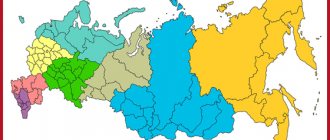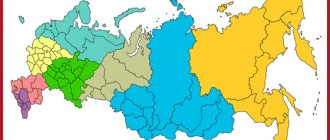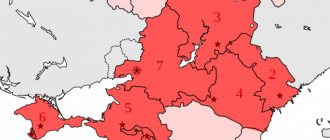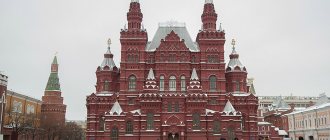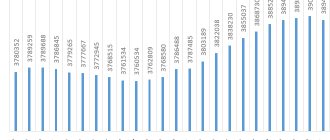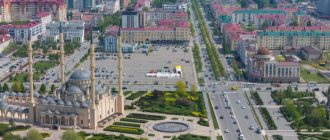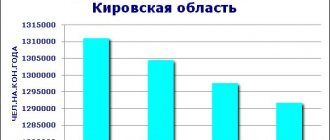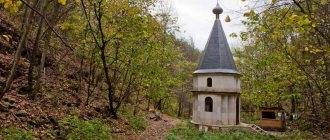Hello, dear colleague! To effectively participate in tenders (government procurement), it is necessary to narrow the search for information about ongoing tenders to a specific region or region.
Why do you need to do this? Firstly , the unified information system (www.zakupki.gov.ru) provides information on ongoing tenders in all constituent entities of the Russian Federation and tracking the emergence of new data in all regions is a labor-intensive and useless task; secondly , you need to take into account your capabilities (the company’s capabilities) to fulfill contractual obligations in the event of your victory. Suppose your company is located in Moscow, and the Customer is in the Sakhalin region, you yourself understand that these are additional costs for transportation, travel expenses, etc. Thirdly , the Customers themselves are quite skeptical about procurement participants (suppliers) from other regions and are doing everything possible to ensure that the contract goes to “their own”. Therefore, you need to clearly define for yourself where you will participate and not waste your time and energy on processing all the other information.
Below I have provided data on the federal districts and their constituent entities of the Russian Federation. I hope this information will be useful to you, because... this is the main navigation tool for searching information in the Unified Information System (UIS).
Map of the Samara region with cities and villages
All major settlements in the region can be found on a map of the Samara region with cities and villages:
- More than a million people live in Samara. The city has a metro and modern railway stations. Samara has many cultural institutions and large enterprises. The largest enterprise for the production of reinforced concrete products is located here. The city is also considered the center of the engineering industry in the region. There are more than 30 markets and more than 60 large shopping centers on the territory. All shopping facilities are displayed on a map of the Samara region with settlements.
- The city of Togliatti is considered a real industrial center. At the same time, huge production capacities have a negative impact on the environment.
- Syzran is a small town. There are several large enterprises located within the city. One of them is an oil refinery, which a detailed road map of the Samara region will help you find.
- The population of Novokuibyshevsk is more than 100 thousand people. There are a large number of enterprises in the city. These are petrochemical organizations, construction companies and food industry enterprises.
From Wikipedia - the free encyclopedia
| Timezone | MSK+1 (UTC+4) |
| Economy | |
| GRP | RUB 1,510.5 [2] billion (2022) |
| • place | 11th place |
| • per capita | 473.8 [5] thousand rubles. |
| Population | |
| Population | ↘ 3,154,164 [6] people (2022) |
| Density | 58.88 people/km² |
| Digital IDs | |
| ISO 3166-2 code | RU-SAM |
| OKATO code | 36 |
| Code of the subject of the Russian Federation | 63 |
| Official site | |
It borders in the west with the Saratov and Ulyanovsk regions, in the southeast with the Orenburg region, in the north with the Republic of Tatarstan, and in the south with Kazakhstan at a single point. Due to the proximity of the West Kazakhstan region of Kazakhstan, part of the Bolshechernigovsky district has the status of a border territory. Formed on May 14, 1928 as the Middle Volga region. In 1929 it was renamed the Middle Volga region, in 1935 - the Kuibyshev region. In the period from December 5, 1936 to May 16, 1992 [8] it was called the Kuibyshev region. Preceding the constitutional changes, the Decree of the Presidium of the Supreme Soviet of the RSFSR on the return of the region to the name Samara was published on January 25, 1991. Historically, the region was preceded by the Samara province, formed in 1851. Source | |
1.3. Natural resource potential
Minerals
Oil is one of the most significant mineral resources in the Samara region. The share of the Samara region in oil production in Russia is 2.3%.
As of January 1, 2007, residual recoverable oil reserves in the region exceed 300 million tons. Cumulative production since 1936 amounted to 1118 million tons. Currently, about 20.0% of the original oil reserves remain in the bowels of the Samara region . If current production levels are maintained, oil reserves will last for approximately 35 to 40 years. The entire territory of the Samara region is geologically promising for the search for oil and gas deposits.
Every year in the Samara region, 170-180 million m³ of associated petroleum gas is flared. The main goal is to achieve a 95 percent level of associated petroleum gas utilization in the fields of the Samara region. At the same time, several goals are achieved at once - the enterprises of the petrochemical complex are provided with raw materials and the environmental situation in the Samara region is improved by reducing emissions of pollutants into the atmosphere.
In addition to hydrocarbon raw materials, deposits of such minerals as molding sands, cement raw materials (limestones, dolomites, clays, opoka), as well as common minerals - brick and expanded clay, construction sands, building stone, raw materials for lime are being developed in the Samara region . The subsoil of the Samara region also contains reserves of chalk, gypsum and anhydrite, rock salt, native sulfur, phosphorites, natural bitumen, diatomites, zeolite-containing rocks, and peat.
It is necessary in the near future to involve the existing potential of mineral raw materials in industrial development to meet the increased needs of the local economy, especially housing and road construction.
1.2. Natural and climatic conditions
The climate of the Samara region is characterized as moderate continental. The average annual air temperature is +3.8 degrees Celsius.
The warmest month is July. The average temperature in July is +19.3 - +21.9 degrees Celsius. The coldest month of the year is January with an average air temperature of -13.9 degrees Celsius.
Annual precipitation is low and ranges from 450 mm in the north of the region to 300 mm or less in the south. Maximum precipitation occurs in June-August.
Geographical position
The Samara region is located in the south-eastern part of the European territory of Russia in the middle reaches of Europe's largest river Volga and occupies an area of 53.6 thousand square meters.
km, which is 0.31% of the territory of Russia. In the north it borders with the Republic of Tatarstan, in the south with the Saratov region, in the east with the Orenburg region, and in the northwest with the Ulyanovsk region. The region stretches from north to south for 335 km and from west to east for 315 km. Being a forest-steppe region in nature, the Samara region in the north is covered with coniferous and broad-leaved forests, and its south and east are predominantly occupied by steppe regions. The largest mountain range in the region and at the same time one of the most beautiful places in Russia are the Zhiguli Mountains, located directly in the bend of the Samarskaya Luka. In addition to the Volga, the main water artery of the region, the most significant rivers are Samara, Sok, Kinel, Bolshoi Irgiz, Kondurcha.
One of the characteristic features of the geographical location is its location in the Volga basin (which looks like a cascade of reservoirs) in its middle reaches and the presence of the Samara Luka as a unique natural monument of world significance. Moreover, it is Samara Luka in spatial terms that is a kind of geometric center of the region, while being located in the industrial semi-ring of the Samara-Togliatti agglomeration.
Source
Subject characteristics
Characteristics of the Samara region
Samara is a city with a rich history. There is a legend according to which its foundation was predicted in the 14th century. Moscow Metropolitan Alexy. On the way to the Golden Horde at the confluence of the Volga and Samara rivers, God's grace descended on him, and he said that “a great city will be erected here, in which piety will shine and which will not be subject to any destruction.”
The Samara fortress was built in 1586. The idea of building fortified towns between Kazan and Astrakhan was due to the need to consolidate and secure the great Volga trade route. Prince Grigory Zasekin became the head of construction and the first governor.
In 1688, Samara servicemen received a royal charter, which ordered the fortress, built in 1586, to be renamed a city. In 1730, the first coat of arms of the city was approved. In 1780, it was confirmed by a decree of Catherine II in its previous form - in the form of a shield, which depicts “a white wild goat standing on the grass in a blue field.” In 1781, Samara was elevated to the rank of a district city in the Kazan province. In 1851, Samara became the center of the province, at the same time being an important center of grain trade on the Volga.
During the Great Patriotic War, by decree of the State Defense Committee of the USSR dated October 15, 1941.
No. 801 SS “On the evacuation of the capital from Moscow” The USSR government and all diplomatic missions moved to Kuibyshev. This resolution has not been canceled to date.
Administrative-territorial division of the region: 10 urban districts and 27 municipal districts. The districts include 13 urban and 292 rural settlements.
More than three million people live in the Samara region. The bulk of the urban population are residents of Samara and Tolyatti.
The most important biological resources of the region are nature reserves and reserves, and first of all, the Samarskaya Luka National Park, Zhigulevsky State Reserve named after. I.I. Sprygina, Buzuluksky Bor reserve.
With the construction of the Volzhskaya Hydroelectric Power Station in 1957, the water of the Zhiguli Sea, which formed above the dam, became the most important hydropower resource.
Districts of the Samara region
In the transport sector, the pipeline mode of transport is the leader in terms of cargo turnover. The leader in passenger flow is road transport.
Federal highways pass through the region. These are roads E 30, M 5, E 121, P 228.
The region is crossed by the most important railway lines. The Samara region is also connected by waterways with other regions. The length of shipping routes is about 680 km. There are three river ports in the region. Transportation is also carried out by air.
All airports will be shown in detail on a map of the Samara region. The map is a real assistant on any trip; it allows you to find all the objects of the region, including the main areas of the region.
Samara is considered the administrative city of the Volzhsky region. The area is surrounded by magnificent natural scenery.
The area is considered an important agricultural producer. On its territory there are many agricultural enterprises and processing organizations, which a map of the Samara region by district will help you find.
The Kinelsky district is located in the center of the region. There are more than 20 agricultural organizations in the district. There is also a soda factory and a brewery. A highway of federal and republican significance stretches through the area.
More than 400 enterprises can be found in the Neftegorsk region. There are also 4 collective farms and more than 90 farms on its territory.
Among the developed areas on the map of the Samara region, the Pokhvistnevsky district stands out, where the agricultural sector is developed, and gas and oil are also actively extracted. The Severny Klyuch enterprise supplies a third of the pork in the region. The area has an extensive road network. There is a highway of republican significance, and the territory is also crossed by the Trans-Siberian railway line.
Tolyatti is considered the administrative city of the Stavropol region. This area has recreational conditions for the development of tourism and health resort business. On its territory are the Zhiguli Mountains. More than 2,700 different enterprises are registered in the area.
